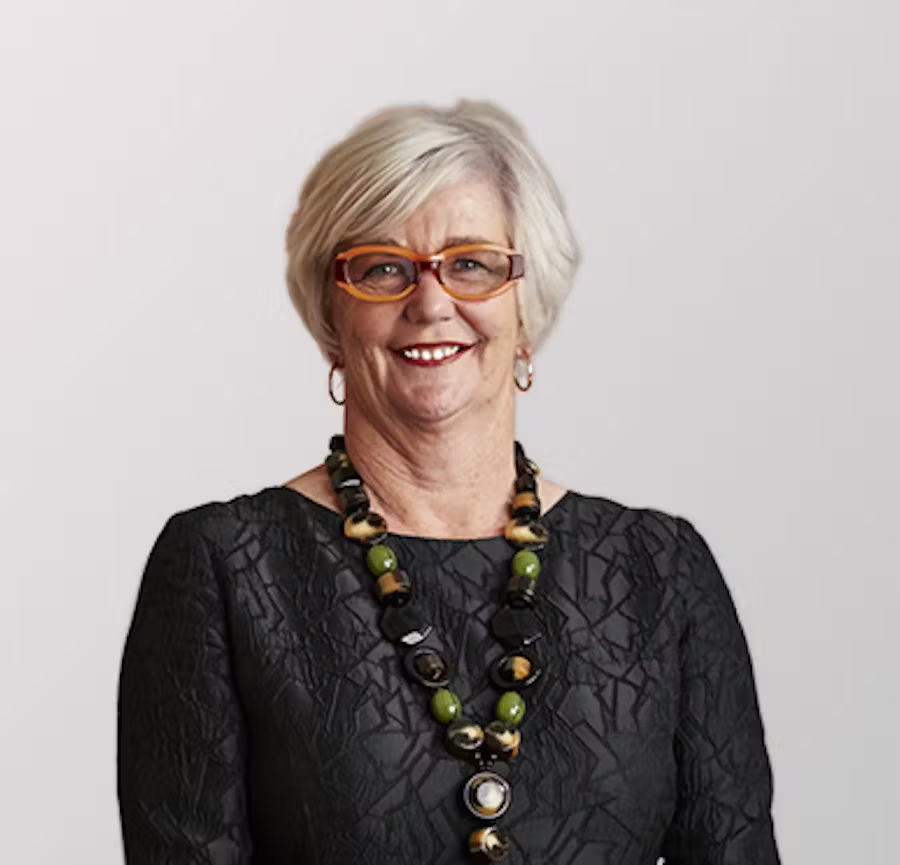Meet Sue O’Connor
Professional Director, Mercer Superannuation
Sue O’Connor serves as a professional non-executive Chair, Director and senior business leader with ASX Top 10 and global listed companies, as well as high profile statutory authorities. Here she demystifies how Boards set strategic priorities and inculcate cultural change.
When looking to grow, particularly if you’re in start-up, decision making should have a global perspective…
From Sue O’Connor’s description, Board members must be part juggler, part tightrope walker because being responsible for direction and change takes a certain courage. While motivating organisations to seek constant improvement is not straightforward, she says “staying still is even harder, it’s the most dangerous place to be. Besides, if it was easy, they wouldn’t need us!”
Board professionals combine general commercial acumen and deep expertise in specific areas. Sue, as an example, spent 25 years in executive leadership within the technology sector including as a senior executive at Telstra. With her finely-honed interests in digital transformation and cyber resilience, Sue focuses her Board contributions on highly regulated, customer facing, technology dependent organisations. These currently include Yarra Valley Water, Mercer Superannuation, State Trustees Victoria, ClimateWorks Australia and Monash Sustainable Development Institute.
For those not familiar with how Boards are formed, it is useful to understand that roles like Sue’s are typically for set terms and she will be appointed to perhaps six quite different organisations at any one time. Newly selected directors have little time to ease into the Board’s agenda: “I have to learn very quickly about each specific environment. It takes an open mind and a commitment to making a positive contribution,” Sue explains.
The intensity of navigating the critical issues tightrope, at pace, is exemplified by Sue’s experience at a number of finance sector enterprises. Boards here are balancing the best interests of their members and clients against being profitable within wide ranging compliance restraints. This is especially fraught for multinational entities and those with international partners. She cites a recent risk assessment project, a desktop simulation of a cyber-attack, which exposed a potential global legal issue: Australia has mandatory disclosure requirements of material privacy breeches. Whereas the US partner operated under mandatory non-disclosure laws. “Even as a simulation, it’s not a happy position to be in. Rehearsals like this are invaluable because they test approaches and resolve problems within a controlled environment. While investing in new approaches aimed at keeping the organisation moving strongly forward, decisions are also very much about keeping the organisation safe. This means safe for all involved: customers, employees, shareholders are only part of your organisation’s ecosystem.”
From Sue’s big picture view, her advice is “when looking to grow, particularly if you’re in start-up, decision making should have a global perspective. Draw on experiences from around the world. Be open to opportunities outside your known base. From the simulation example, you can see it’s not enough to limit your thinking to the Australian context”.
Risk appetites and “giving it a crack”
In setting a culture that embraces change, Sue believes Boards need to be better at saying: “This is a great idea, but we only have a risk appetite to a certain level. Let’s test it to give it a crack.” She also believes that even if it doesn’t work, Boards “need to be better at expressing confidence and appreciation for the effort.”
Boards are always challenged by a complex matrix of risks and opportunities. For instance, the Board at Yarra Valley Water is balancing a projected doubling of the Melbourne population against climate change projections that will halve the water available to the city. This is at a time when its customers are already struggling to pay for their water utility.
Its focus is on supporting the executive and teams to find the innovative solutions that will drought-proof Melbourne, conserve water and protect the environment – yet maintain a service that is affordable for residential and commercial customers. Sue considers culture to be the “secret sauce” of high performing organisations and a key ingredient to ensuring that Yarra Valley Water meets these challenges. Proudly, Sue cites the external recognition of Yarra Valley Water’s AON Hewitt Best Employer Award 2017. The judges acknowledged the utility’s highly constructive culture with its focus on the customer and the community in its decision making.
Be authentic. You can’t spin change
Sue knows there’s magic in a high performing Board and organisation that’s focussed on improvement. But instilling positive change down through the enterprise requires attention every day – up and down. “If you’re embarking on an organisational pivot, look for strategy and then people. The Board needs to be very clear about purpose and priorities”.
“Paraphrasing Stephen R. Covey, you can’t spin yourself out of something you’ve behaved your way into. Everybody must genuinely believe in what is to be achieved and what their role is in making change happen. The organisation needs to encourage and reward people for moving towards its purpose. By giving teams the authority and confidence to deliver, the rest starts to play out from there.”
Diversity bringing quality change
The research is clear that when you have diversity of thinking, not only throughout the enterprise but also around the board table, the returns for customers, shareholders and community are increased substantially. As new Board members are brought in, expertise and experiences from different industries can cross pollinate. The diversity that comes from gender, ethnicity and thinking skills are very powerful drivers of superior returns.
The best Boards listen more carefully, observe more widely, think more deeply and act decisively. They take on non-executive directors with tangential experiences – as in Sue’s case where, besides her passion for business, she has a matching creative side as a commissioned photography and video artist.
As Sue says, “diversity brings wider foresight, insight and oversight – you can’t succeed with clones of yourself”.
diversity brings wider foresight, insight and oversight – you can’t succeed with clones of yourself
– Sue O’Connor
All individuals interviewed for this series were selected based on their professional standing and experience, and are wholly independent of any commercial relationship with Konica Minolta. Their comments and insights were provided freely without any form of payment. None of the comments provided constitute an endorsement of Konica Minolta products or services.





